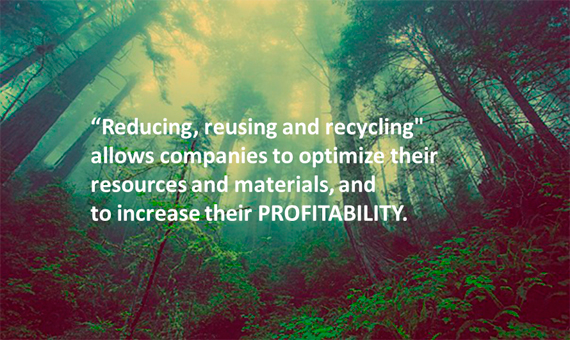The aim of the Circular Economy is to change the production modes of the future in order to ensure that each product goes through multiple cycles of use and production. The idea is for “resources to be converted into products, products into waste, and waste into resources”. In other words, for the end of life of one product to serve as the basis for the birth of another –one of the definitions we like to use at the Circular Economy Foundation.

This idea therefore goes far beyond simply recycling. The aim is not only to minimize or repair the damage occurring in the system itself, but also to tackle the root causes. This requires taking the environmental impact into account in all the production phases, even in the design and conception of the products (Ecodesign). The paradigm of the circular economy is in total opposition to the current linear system of production. Although until now the common practice has been to “take, make and discard”, the goal of the circular economy model is to “reduce, reuse and recycle”, so that all the materials and products in the production chain are used to feed other systems.
This new sequence –”reduce, reuse and recycle”– allows companies to optimize their resources and materials, and to increase their profitability as a result. This would lead to major savings in materials and create many thousands of jobs, as indicated by data from numerous studies.
It also enhances companies’ reputations. In recent years, companies have become more aware of the environmental impact of their productive activities, and developed policies of environmental responsibility to reduce greenhouse gas emissions, environmental pollution and more. Promoting the circular economy would be seen as one more step forward, and potentially differentiate them from their competitiors, as this model requires committed companies to work together as part of the network, as one company’s waste is another’s resources. It could also lead to the development of industrial estates dedicated to the circular economy (or industrial symbiosis).
In addition, this system generates an ecosystem that is favorable to innovation, thereby encouraging the emergence of new business models. The circular economy is thus an alternative solution to a model of production and consumption that is anchored in the past and is today clearly overdue for renewal.
For this reason the European Parliament passed the resolution entitled “Towards a circular economy: A zero waste programme for Europe”, and has undertaken to legislate on the issue. There is no doubt that there is a need for a global response. But this is also an opportunity for business leaders to spearhead the change toward a new model. A model that is concerned with the environment and also with people. A model that is more sustainable but also more creative, more participative, more efficient, more productive and a better generator of employment. A more widely recognized model with a better reputation, of which both business owners and workers can feel proud and of which everyone can be a part. This may be the best possible model for a future that will be complex and challenging, but not unattainable.
See the original article published in i-ambiente.
Vicente Aparici Moya (@aparici54)
Board of Trustees of the Circular Economy Foundation (@Ec_Circular)
Comments on this publication